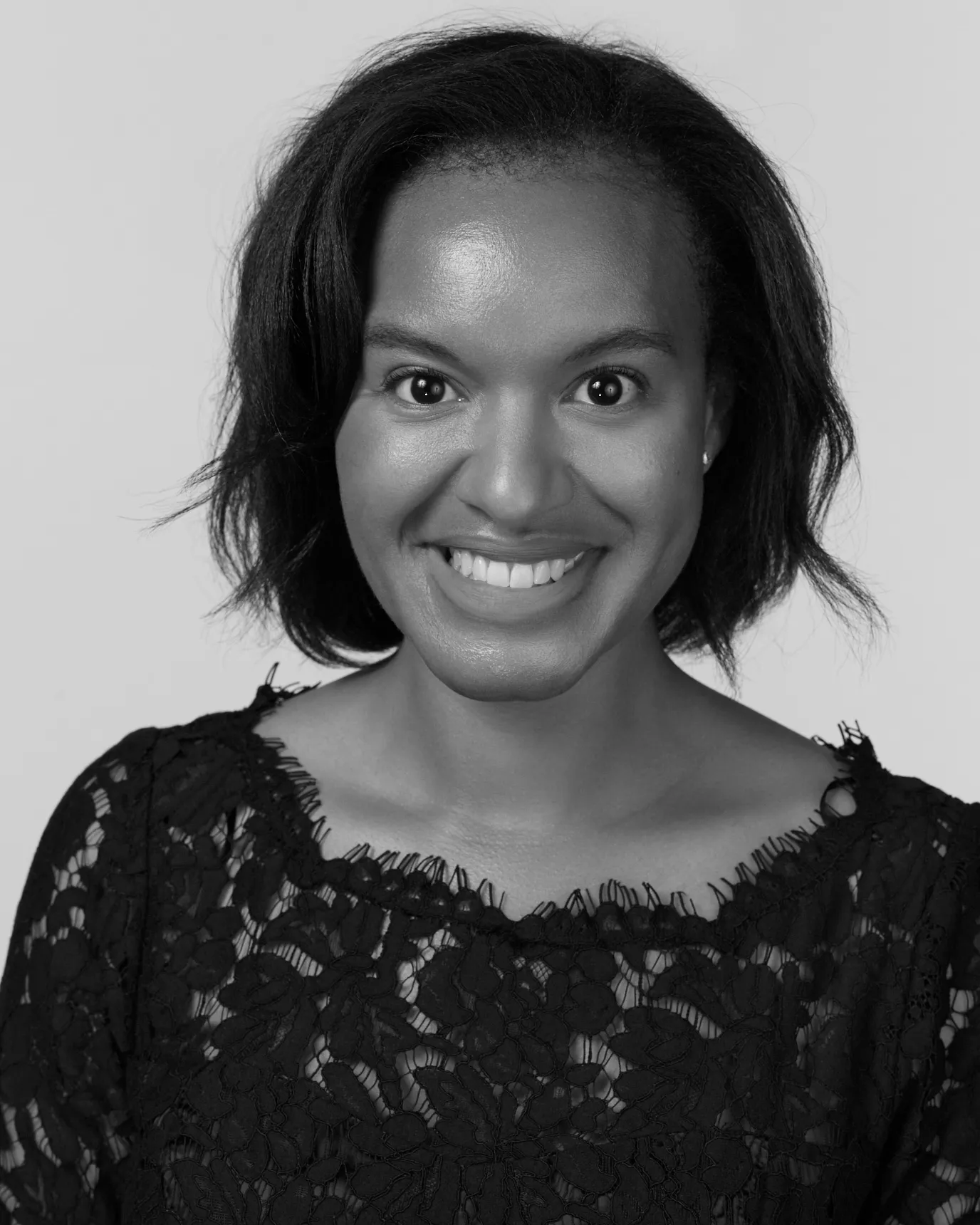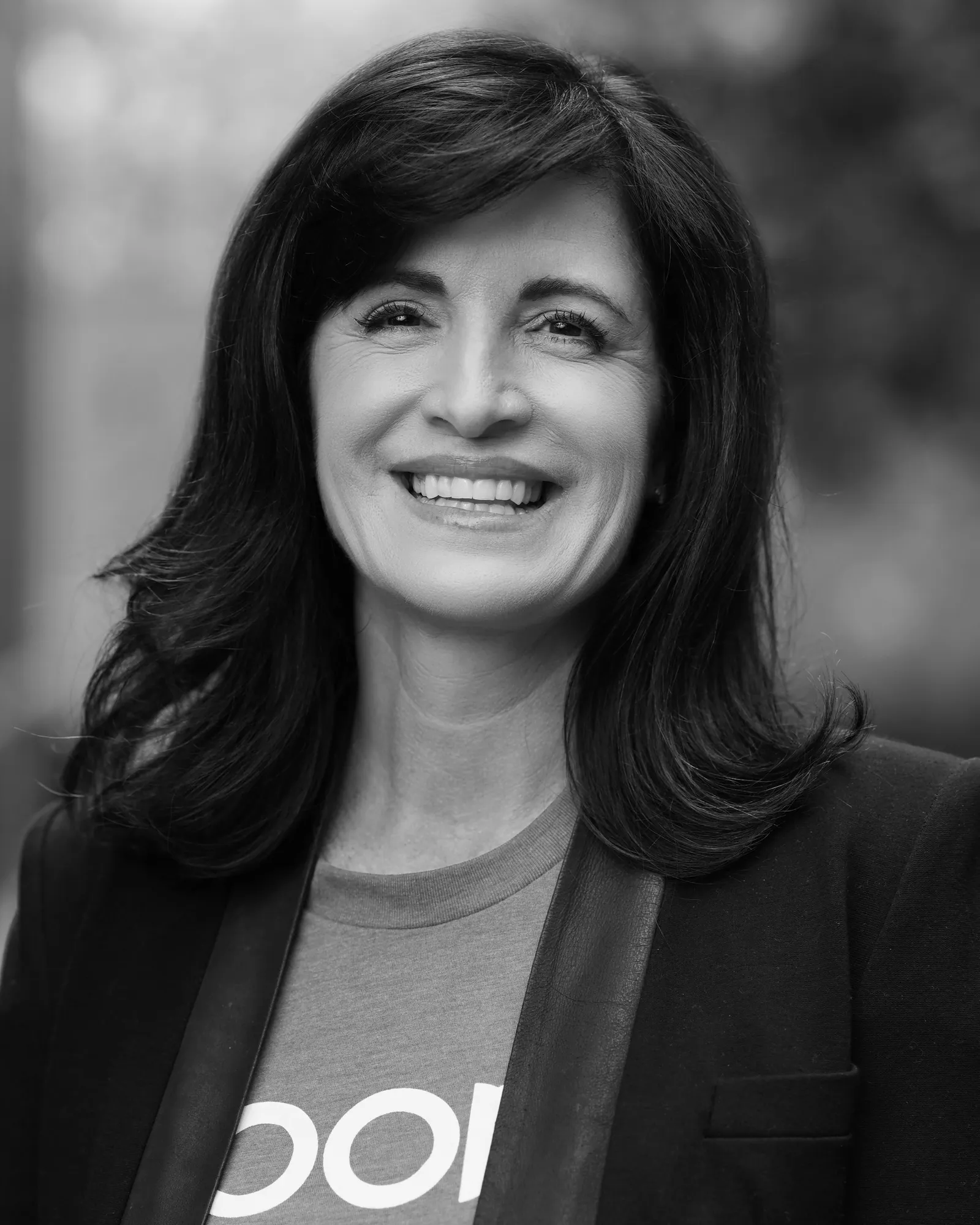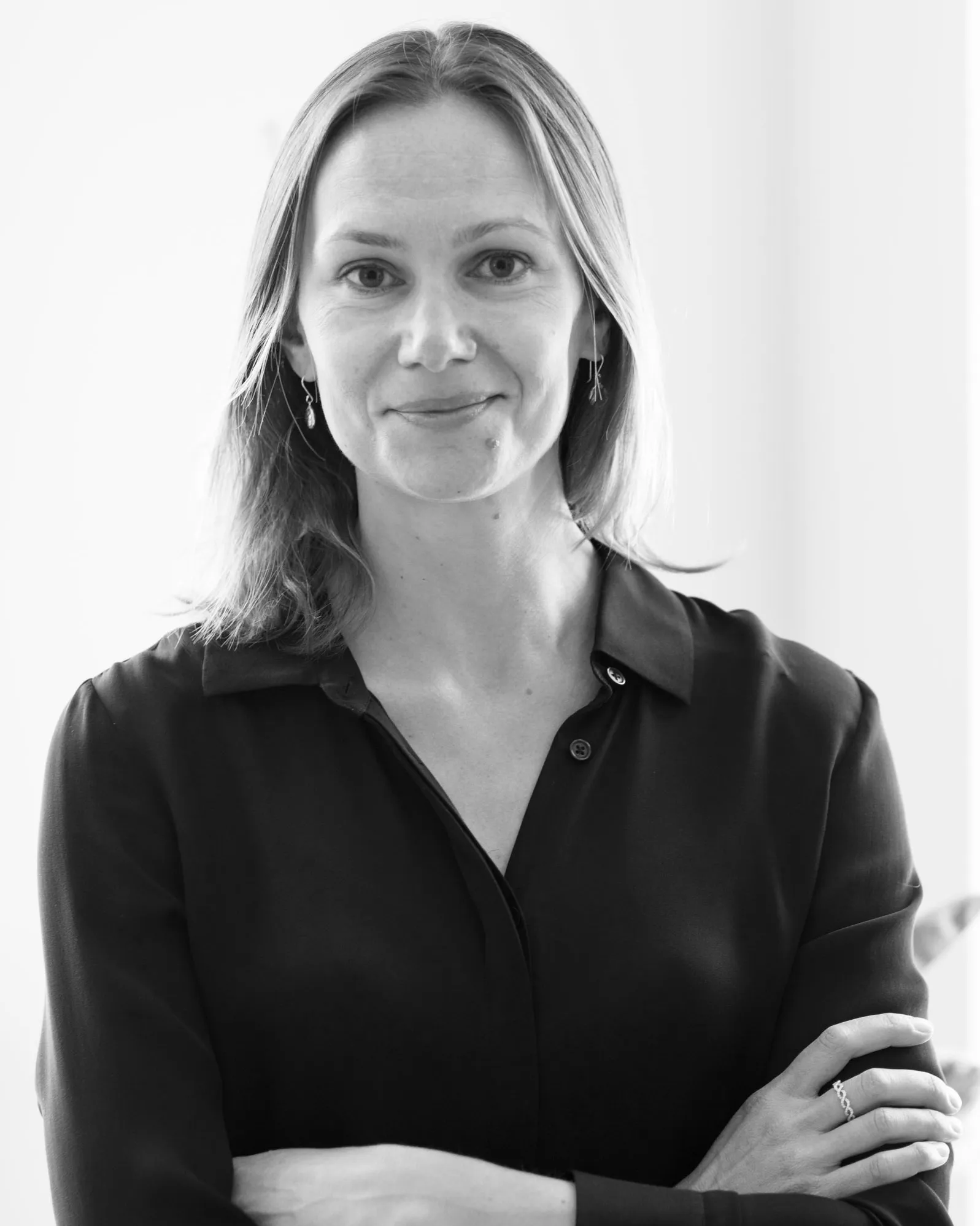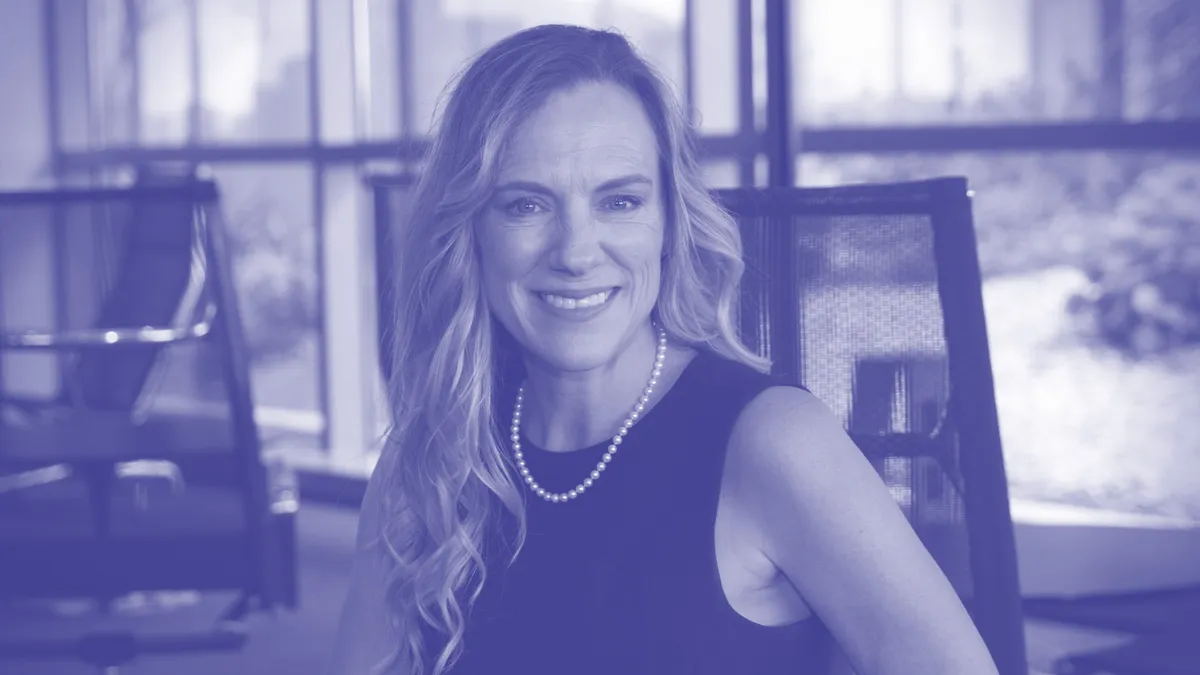It’s the era of hip hop and fax machines — the ‘Good Decade’ is in full swing — and Angela Pierce is in the thick of her investment banking career. She walks into a $5 billion syndicated bank deal with American Airlines. She is the only woman among 500 bankers in the room.
Pierce wears a fake engagement ring, despite not yet receiving a proposal, so that she won’t get hit on, and opts for a light pink suit instead of black or navy, to throw off her peers.
“I think females have a lot of strengths, because we have the ability to allow people to let down their guard. In those environments, I was not going to act like a male, because I’m not one,” said Pierce, now CFO of Austin, Tex.-based tech firm Anaconda on her experience in corporate banking back in the ‘90s.
“My communication style is strong and aggressive, I would slam tables and talk loudly, I wanted people to know that I was not weak, I was not a flower,” said Pierce.
Thirty years later, more women are stepping up to C-suite positions and making their mark in the financial world — the NFL, for example, hired their first ever woman CFO last week and electric vehicle maker startup Nikola just appointed Stasy Pasterick, 36, as its new finance chief.
The percentage of female CFOs hit an all-time high of 16% in 2022, up from 6.3% in 2004, and the number of women CFOs has nearly doubled over the last 10 years, according to data from CristKolder’s recent Volatility Report.
“It’s so much better now, I think women have more confidence than I did when I got out of school, and they are less afraid to speak up,” said Pierce.
Maybe women in finance no longer feel the need to fake an engagement, but they still account for less than one in five CFOs of Fortune 500 and S&P 500 companies, according to the data from CristKolder.
This Women’s History Month, CFO Dive spoke with four notable women in finance: Pierce, along with Kelly Steckelberg, CFO of Zoom, Natalya Davick, CFO of branded resale company Trove and Mandy Fields, CFO of e.l.f. Beauty to discuss the challenges and rewards of being a female finance chief today.
While each took their own unique path to the top finance seat, they all had the same advice: don’t be afraid.
Don’t be afraid to raise your hand
Fields — a graduate of Indiana University Bloomington’s Kelley School of Business — started her career in investment banking on Wall Street focused on oil and gas, and took a risk early on by applying for a promotion while pregnant, knowing that if she got it she would have to take maternity leave just a month after getting started in the new role. She got it.

“Instead of worrying about my additional responsibilities, I decided to embrace it. This taught me to never be afraid of rejection or think that something might not happen. I knew I had already put in the time to figure out if I could do this job or not, and I could — which gave me the confidence and drive to reach new career heights,” said Fields.
Although Fields’ ambition paid off, her career did come with its moments of self doubt as well.
The current CFO of the Oakland, Calif.-based beauty brand empire always had an inclination for numbers, but when first presented with the opportunity to be a CFO at age 35 for retail company BevMo — Fields had doubts, “which wasn’t like me,” she said. “I had always been confident in what I could do but I fell into the trap of ‘checking the boxes’ and looking at how many I had unchecked — how many elements of the role I hadn’t done yet instead of focusing on the accomplishments I did have,” she said.
Self doubt is not uncommon for women in the workplace, especially in high-powered positions like that of Fields’.
This is for good reason: they don't have too many others among them. For every 100 men who are promoted from entry-level roles to manager positions, only 87 women are promoted, and only 82 women of color are promoted, according to McKinsey & Company’s 2022 Women in the Workplace report.
Like Fields, Steckelberg, too, caught herself doubting her own abilities when it came to taking an ambitious role earlier on in her career.

The finance chief of the San Jose, Calif.-based video communications platform, which exploded during the pandemic, Steckelberg started her career at KPMG as an audit manager in 1991. She then got the opportunity to travel internationally with a company called PeopleSoft, which was eventually acquired by Oracle. Steckelberg then went on to become the CFO of WebEx and the consumer segment finance senior director at Cisco after that, before finding herself at Zoosk, an online dating platform, after following a boss there in 2011.
It was at Zoosk that she found out she had the opportunity to take the top executive seat as CEO, an opportunity she never had been offered before.
“The founders of the company told me on a Friday afternoon, ‘Hey, we're transitioning, and on Monday the board is going to offer you the role of CEO,’ which was completely a surprise to me. And the very first thing that came into my head was not ‘yay’ or ‘awesome.’ It was ‘I don't know how to be a CEO.’ And luckily, I didn't say it out loud,” said Steckelberg.
She then stopped and reminded herself that everyday, she had ideas on how to make the company better at the time, and make improvements. “This is your chance,” she told herself.
Now, looking back at her decision to take that CEO role, Steckelberg believes she is a much better CFO for it.
“You don't have to know everything; I didn't know any specific fields when I started in them, but I wanted to learn and I wanted to figure it out,” said Davick, CFO of resale retail company Trove, that works with brands like lululemon, Canada Goose and more.

Davick knew from the beginning that she wanted to be at the financial helm. “I remember writing my business school applications back in 2006-2007, and they asked, ‘What do you want to do when you grow up?’” She earnestly wrote, “I want to be the CFO.”
Since those applications, Davick has worked in leadership finance roles at Gap Inc., Google and Twitter before landing her first CFO position at Palmetto in 2021. She was appointed CFO at Brisbane, Calif.-based Trove in January.
“My one piece of advice is to know the incredible force of the personal network, and establish yourself and do good work and build those relationships. Since my very first role, which I got by just submitting my resume online, every single role after that came to me through somebody that I had worked with before,” said Davick.
One problem for women, she said, is that they think they need to have the answer to every question, and fit all the criteria for a role before they even think to offer themselves up for it. Men do not think this way.
Hurdles along the way
Today, women leaders are leaving the workforce at the highest rate ever seen — for every woman at the director level who gets promoted to the next level, two women directors are choosing to leave their company, according to the McKinsey report.
And, although this could be a result of women demanding more from their place of work, underrepresentation at companies can inhibit other ambitious women from advancing in their careers, especially in finance.
“Finance can be a demanding industry, which I believe is why some women shy away from leadership positions in the space. It’s also still perceived by many as a male-dominated field that’s difficult to break into,” said Fields.
Steckelberg agreed, saying that the biggest challenge she sees for women in finance today is not having someone who looks like you as a mentor. “I honestly take this very seriously in my role, and being visible so that other women see what's possible. And it takes work. Most things in life are not easy, but they’re certainly possible,” she said.
Pierce, who says she sees emerging women in finance as much more confident and sure of themselves than she was back in the ‘90s, still feels a calling to look out for them.
“I still have an obligation to help women move up,” she said.
Visuals Editor Shaun Lucas contributed to this story.











